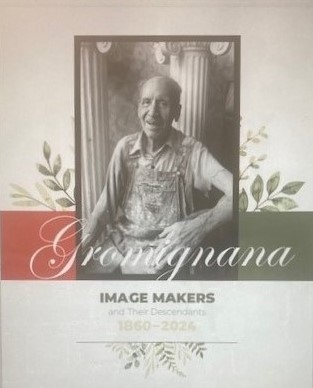INTRODUCTION BOOK ONE

Decades ago, I started researching my family’s genealogy, even before it became a popular pastime. I have always loved history, and I have been especially dedicated to learning as much about my ancestors as possible.
One of the most fascinating aspects of my family’s history is the men and women from a small Tuscan village who worked in the statuary and plaster-casting business. Starting around 1860, several families from the small town of Gromignana, Italy, left their village to travel the world. These families—Angeli, Casani, Grisanti, Marsili, Mattei, Pellegrini and others—were
all dedicated to creating great wealth to fund a comfortable independence, either in Italy or wherever they found land and opportunity to live out their dreams. Their story is a twist on the traditional immigrant tale.
The purpose of this book (ONE) is to recognize our Gromignana-born family members and their descendants who chose to work in the statuary and plaster-casting business. These Gromignanesi initially migrated temporarily from their homes to travel throughout Europe, sell their wares, and/or search for work. By the mid-1800s, they had expanded their migration to East Asia (Indies and Australia), South America (Brazil, Argentina, and Venezuela), Africa (Egypt and South Africa) and North America (Chicago, New York City, Cleveland, Toledo, Detroit, Cincinnati, Louisville, Nashville, and northern California).
By the early 1880s, most of these individuals worked exclusively in the statuary and/or plaster-casting business. In these early years, these migrants worked “on the fly,” but by the late 1800s they began to establish statuaries in various cities throughout the world. Initially these migrants had no intention of leaving Gromignana permanently. Those who did
emigrate in the early twentieth century often did so for specific, personal reasons. It was rare for a Gromignana native to leave and never return.
The story of these individuals and their families demonstrates the constant movement back and forth of many and the emigration of a few. Why some “go and return” and others “leave permanently” will never be known for certain. In an attempt to better understand these ancestors, this book presents the oral and documented history known of their lives and that
of their families as they sought a comfortable independence and how the statuary and plaster-casting businesses provided the economic support for them to strive for and, in some cases reach, this ultimate goal.
I HOPE MANY FAMILY AND FRIENDS WILL ATTEND
THE CELEBRATION EVENT IN LOUISVILLE KENTUCKY
SATURDAY, AUGUST 10, 2024 TO READ THE REST OF THE STORY!
